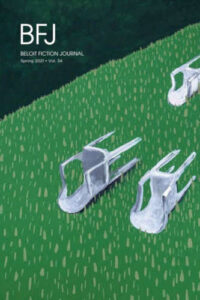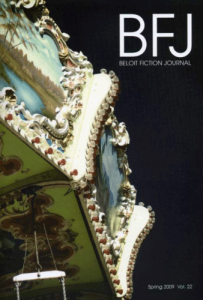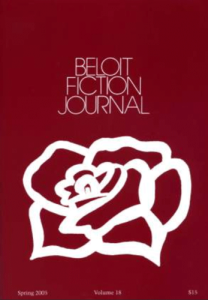Beloit Fiction Journal – Spring 2011
Volume 24
Spring 2011
Annual
Jeff Vande Zande

If I hear writers talking about literary magazines, I often hear them getting excited about some new magazine on the scene. They talk about the experimental aesthetic or the unique formatting or the promise of aggressive marketing. They talk about what they’ve submitted and what it might mean to get something accepted. They talk as though the magazine might just be the next Paris Review—or the next Beloit Fiction Journal, for that matter.
Statistically, more often than not, in three years, those new magazines are gone. The editors get burned out. The formatting is obviously too expensive. The marketing isn’t the surefire approach that they’d imagined. Too many submitters and not enough subscribers. To the point, it’s just short of miraculous when a literary magazine can sustain itself beyond five years.
The Beloit Fiction Journal has been publishing annually since 1985. It’s worth taking a moment to do the math—twenty-six years. On their website, Fred Burwell writes about the history of the magazine’s first issue, how the student editors debated the merits of stories in the “publishable” category—(“Fierce arguments developed between different factions—the avant-garde artistes, the mainstream English majors, the traditional-minded, the experimental.”) —and how finally the magazine came together under one guiding principle: “Only the quality of the story mattered.”
Burwell writes, “By the end of spring semester 1985, we’d selected a good variety of stories.” Nothing ostentatious in such a statement. Pretty simple. Then again, maybe a magazine’s approach should be simple. Let the quality of the stories be the only thing that matters, and then select a good variety. That’s how they did it in 1985, and it seems that’s how they are still doing it in 2011.
I can honestly say that I sat back and read this issue of the Beloit Fiction Journal—story after story—and admired almost every piece in it. Each story took me someplace different: Alaska, an Indian reservation, a suburban mall, and an Independence Village for retired folks, just to name a few. The situations were as unique as the settings.
In Dinah Cox’s “The End of Something Better, the Start of Something Worse,” we get the sordid love triangle between two college girls in their early twenties and their thirty-five year old lover, Gordon Steve. Things get really strange when a third woman stops by Gordon’s house and drops off a baby. Without bewilderment, Gordon takes the baby and, after a moment, asks, “What does he eat?” In a very satisfying way, the arrival of the baby tests the tenuous strength of the trio’s sustainability.
In Mark Wisniewski’s “Intervention,” we get a woman who thinks she’s in control of her life, which turns out to be a weak façade, especially after she learns that her best friend is pregnant. Admitting that she once dragged a mini-mart cashier into a back room and had sex with him, she offers the reader an explanation that sounds both like philosophy and denial:
As much as I’m not now exactly proud of having done it, I do have to say I believe everyone able should have sex like that, out of nowhere, with a stranger, once before they die. It reminds you how open and willing and attentive people can be; how you yourself will always harbor lively desires; how you wield more power than you think.
Bringing us back to a more mundane condition—and yet showing us that there really is no such thing as mundane—Melinda Moustakis’ “The Last Great Alaska Lumberjack Show” gives us a couple in their forties dealing with impotence, an aging parent, and challenging teenage children. The story is told from a second person point of view:
You stand on a new, fresh log, and raise the axe. “When have you, Miss C Average, ever wanted to go to school?”
“Ever since Dallas or Dakota or whatever his name is,” says Slug from upstairs.
“Shut up,” says Moody. “You know the rules,” you say. “No dating anyone named after a city or state.”
“Oh my God,” she says. “You’re so…you’re…”
You pull the blade out and swing again. “Maybe if you got better grades you could think of something,” you say.
Anybody with teenage children is laughing and crying at the truth in that exchange.
The Beloit Fiction Journal. No, it’s not new on the scene. It’s not boasting about how cutting-edge it is or wearing a tradition-be-damned attitude like a badge. It’s simply doing what it’s been doing since 1985—publishing good and varied stories worth reading. No need to forecast how colossal they’ll be. If this issue is any indication, they already have a history of doing it right that speaks for itself.
[beloitfictionjournal.wordpress.com/]
Beloit Fiction Journal Volume 24, Spring 2011 reviewed by Jeff Vande Zande



